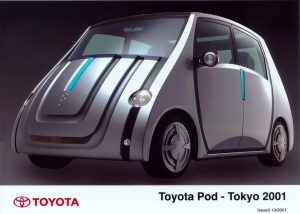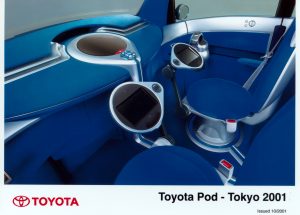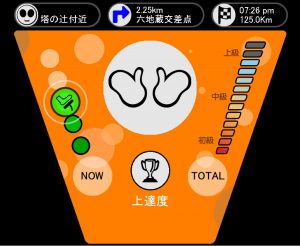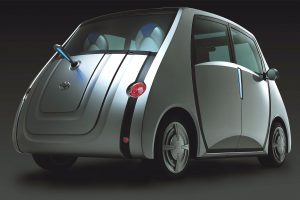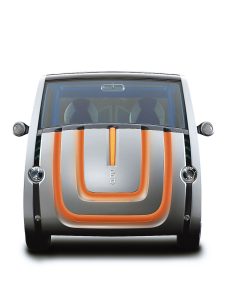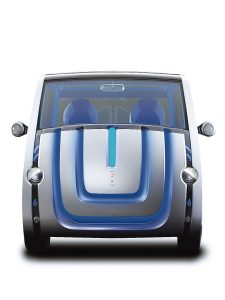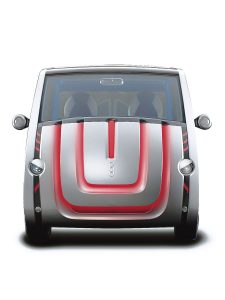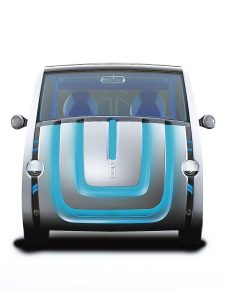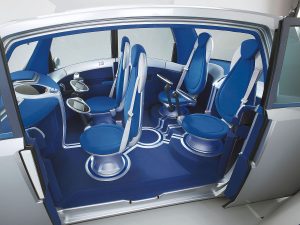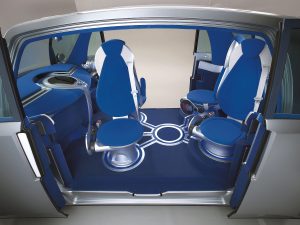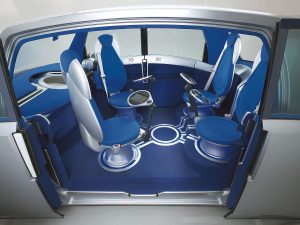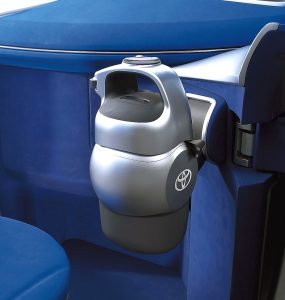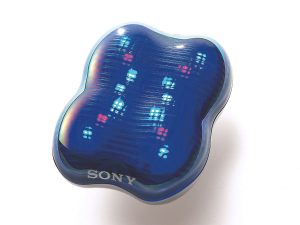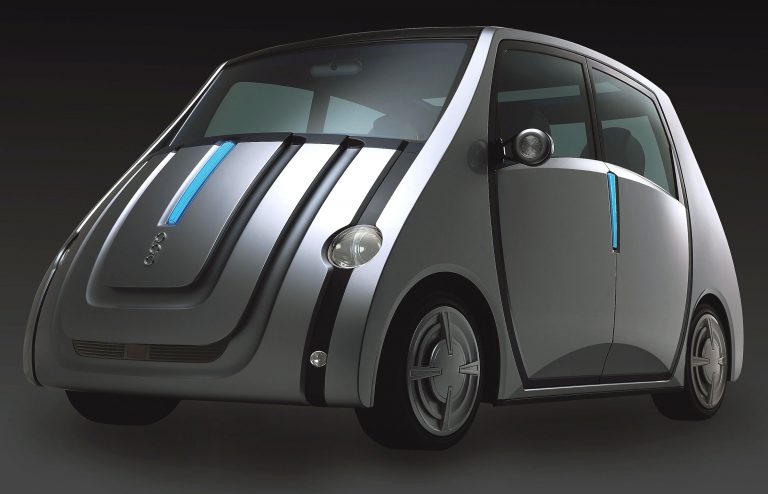Future Shock!
Toyota Presents a Car That Reflects Your Moods
Imagine a car with feelings. Impossible? Well, Toyota has just built one and it is called pod!
The pod is just one of the 17 innovative concept cars from Toyota at the 35th Tokyo Motor Show, which opens to the public this weekend. Developed in collaboration with Sony Corporation, and likely to be the star concept on the Toyota stand, the pod is a near-future, IT-centered vehicle that points at new relationships between cars and people – even between cars and other cars!
The pod takes the car from being just a tool to being a partner. It recognises that modern IT enables the car-user relationship to be deeper as both the machine and the people using it can become more closely involved. Together in good times and bad, the pod serves as your partner who understands your feelings. A car unlike any other because it feels how you feel – just like a member of your own family.
The pod (the name evoking an image of a protective capsule that gently envelops and protects family members) has an electronic personality to help it detect the feelings of the driver and to express itself.
A Familiar Face
From the outside the pod features a symmetrical design that echoes the functionality needed for an IT car to access information coming in from all sides, unlike regular cars, which aim at only one direction.
Inside, the pod is designed for passengers to communicate together, not just travel alone. Each seat has the same space and functions, which can be flexibly combined. For example, each seat will turn to face the doors for easy seating, or face each other creating a welcoming atmosphere to match the pod’s user-friendly features. Of course, they can all face forward like a normal car too.
Joystick Control, Active Understanding
The pod uses a control system that replaces conventional controls such as the steering wheel and pedals with an electronically controlled joystick, controlled by the right hand only. The system dramatically improves vehicle performance areas from basic operation to collision safety.
The pod can also gauge the driver’s level of skill, determined from the smoothness of steering, accelerator and brake operation. Suspension is altered depending upon the roughness of the road surface and the vehicle also gauges the degree of hurriedness by detecting the difference between regular driving behaviour.
Not Your Usual Self Today
The pod detects irregular driver biometric data such as pulse and perspiration rate, using the data as a warning to indicate the degree of driver impatience. The car then communicates with the driver and urges caution. It also lets others know its mood by changing its “face” – orange for happy (when the driver approaches), blue for upset (a single tear when you have a bump) and red for angry (brake too hard or swerve).
Communication between cars and car owners has always been one-sided, but not anymore. The pod can respond to the kindness of its driver. As the relationship between the car and driver progresses, the vehicle learns its driver’s preferences and habits.
The pod’s entire body is used to express emotions. Like a dog, it will wag its “tail” when happy. The pod is the first step towards a generation of vehicles that simulate genuine human interaction. There are 10 driving modes ranging from happy, sad to surprised and even afraid. For example, park pod and walk away and the car will sob gently at being left behind.
Chatterbox!
The pod can exchange information with other vehicles using wireless data communication to alert other vehicles of your intentions such as “Let me pass” and even “Thanks” after being allowed to pass.
Dedicated Short-Range Communication (DSRC) is part of a wide range of applications under development that should enable high-speed exchanges of information between the
vehicle and the road. DSRC systems will allow faster communication of road and traffic information as well as increasing safety by sending messages to pedestrians ahead.
Other technology
In addition to the central fan-shaped display for car navigation, each seat is equipped with its own individual display to allow passengers to enjoy their own music or video content. The central display also shows emergency information, and displays driver warnings.
Audio Entertainment seats are fitted to the pod offering resounding acoustics thanks to high quality speakers, digital sound output and woofer boxes designed to produce synchronous tactile and audio sound. Each “Individual Music Space”, like the whole pod concept, is quite different from any other car that has been seen before.
Concept creation
Toyota:
- Total interior/exterior design
- Design/production of chassis and overall vehicle
- Expression of emotion by vehicle, technology for gauging driver impatience and skill level
Sony:
- Individual component styling – portable terminal, interior displays, joystick
- Development of ECU (Emotional Communication Unit) for expressing emotions.
ENDS

